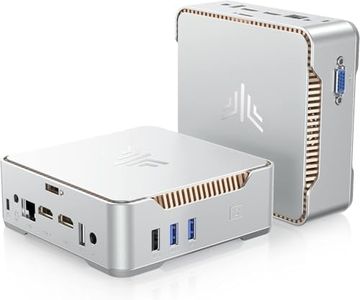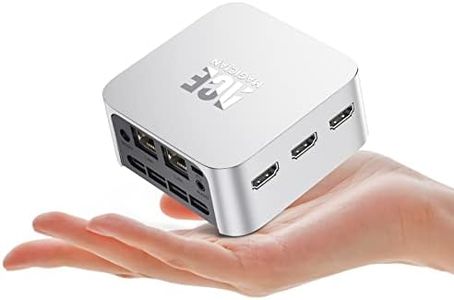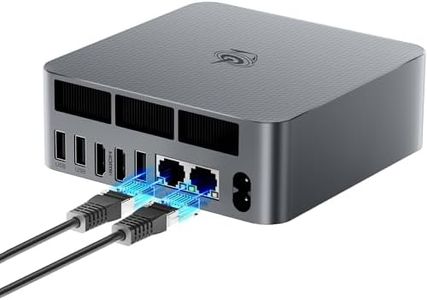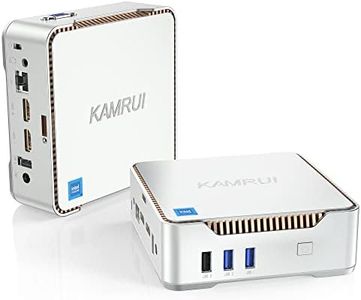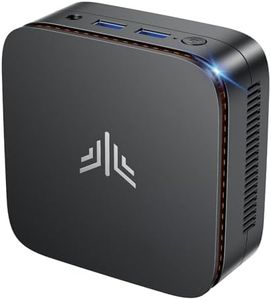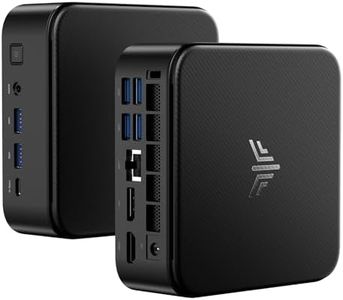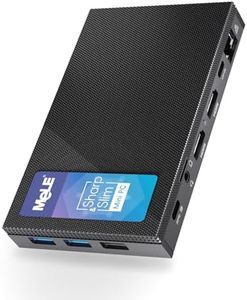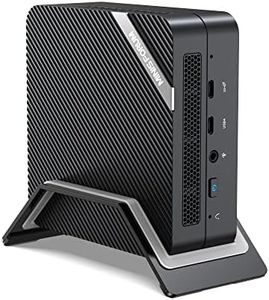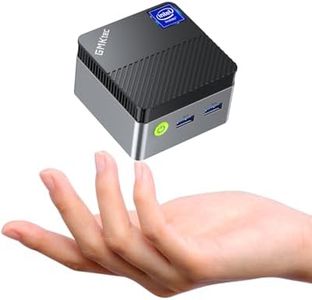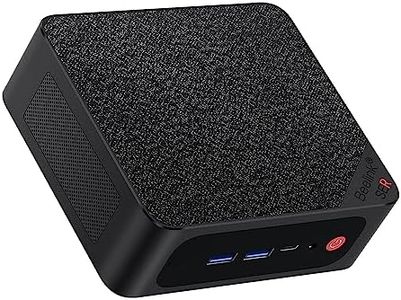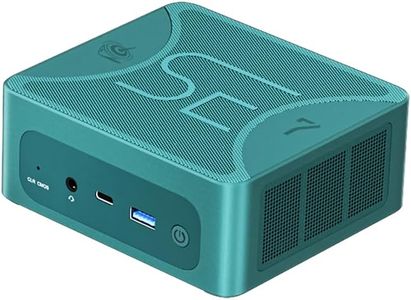We Use CookiesWe use cookies to enhance the security, performance,
functionality and for analytical and promotional activities. By continuing to browse this site you
are agreeing to our privacy policy
10 Best Mini Pcs
From leading brands and best sellers available on the web.Buying Guide for the Best Mini Pcs
Mini-PCs are compact computers that offer a balance between portability and performance. They are great for people who need a computer that doesn't take up much space, whether for home, office, or entertainment use. When choosing a mini-PC, it's important to think about what you'll use it for—like web browsing, office work, media streaming, or even light gaming. Understanding the key specifications will help you find a mini-PC that fits your needs and ensures you get the best experience.Processor (CPU)The processor is the brain of the mini-PC and determines how fast and efficiently it can handle tasks. A basic processor is fine for simple tasks like browsing the web or streaming videos, while a more powerful processor is better for multitasking, running demanding applications, or light gaming. If you only need the mini-PC for everyday tasks, a lower-end processor will suffice. If you plan to use it for more intensive work, look for a mid-range or high-end processor.
Memory (RAM)RAM is the short-term memory that helps your mini-PC run multiple programs smoothly. Less RAM (like 4GB) is enough for basic tasks, but if you want to run several applications at once or use more demanding software, 8GB or more is recommended. Think about how many programs you usually have open at the same time—if you multitask a lot, go for higher RAM.
StorageStorage is where your files, programs, and operating system are kept. Mini-PCs come with different types and sizes of storage, such as traditional hard drives (HDD) or faster solid-state drives (SSD). SSDs make your mini-PC start up and load programs much faster. For light use, a smaller storage size (like 128GB) may be enough, but if you store lots of files or install many programs, look for larger storage (256GB or more).
GraphicsGraphics capability affects how well your mini-PC can handle images, videos, and games. Most mini-PCs have integrated graphics, which are fine for everyday use and media playback. If you want to do light gaming or creative work like photo or video editing, look for a mini-PC with better integrated graphics or even a dedicated graphics chip.
Ports and ConnectivityPorts and connectivity options determine what devices you can plug into your mini-PC, such as monitors, keyboards, and external drives. Common ports include USB, HDMI, and audio jacks. Some mini-PCs also offer Wi-Fi and Bluetooth. Think about what devices you need to connect and make sure the mini-PC has enough and the right types of ports for your setup.
Size and DesignMini-PCs come in various sizes and shapes, from very small stick-like devices to slightly larger boxes. The size can affect where you can place the mini-PC and how easy it is to move around. If you need something ultra-portable or want to hide it behind a monitor, go for a smaller design. If you need more ports or better cooling, a slightly larger mini-PC might be better.
Operating SystemThe operating system is the software that runs your mini-PC, such as Windows, Linux, or Chrome OS. Some mini-PCs come with an operating system pre-installed, while others let you choose. Pick the one you are most comfortable with or that supports the programs you need to use.
